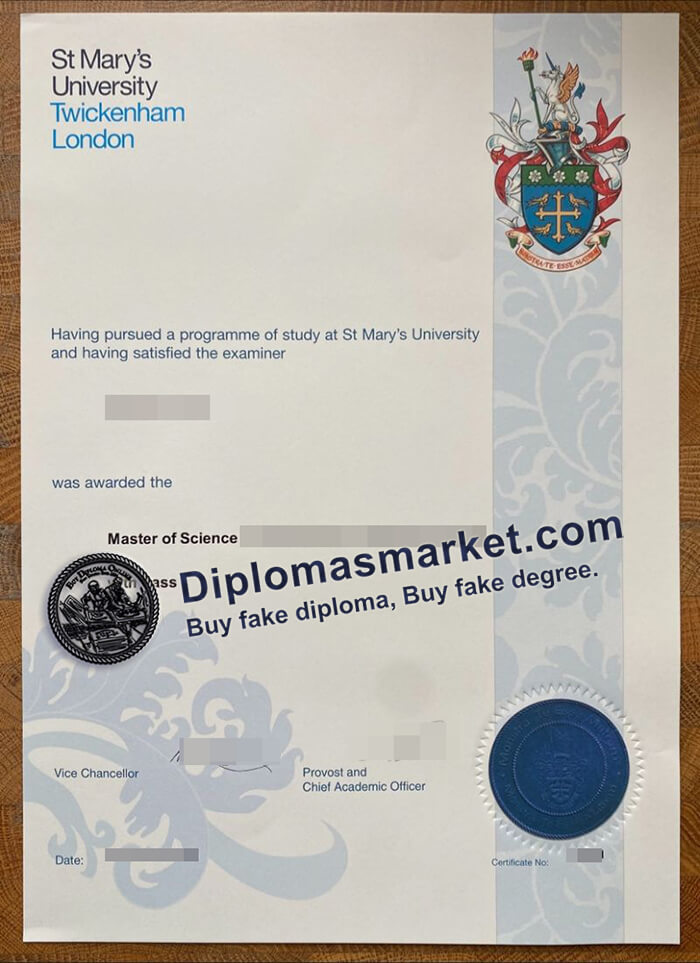
St Mary’s University degree
St Mary’s University, Twickenham is a public university in Strawberry Hill, Twickenham, in South West London. Founded in 1850, it is generally acknowledged to be the oldest Roman Catholic university in the United Kingdom. Buy fake St Mary’s University Twickenham London degree, How to Apply for a St Mary’s University diploma? Formerly called St Mary’s University College, it was granted full university title by the Privy Council on 23 January 2014.
St Mary’s is a member of the Chartered Association of Business Schools and has one of the most recognised business schools in London, accredited by the Chartered Management Institute, the only body in the UK that can award the Chartered Manager status. buy fake degree. Is it possible to obtain St Mary’s University certificate online? Buy fake degree in London.
The most popular subjects at St Mary’s include Business Management, Finance and Accounting, Sports Management, Sport and Exercise Science, Sports and Football Coaching, International Sports Journalism, Law and Business Law, Social Sciences, Education and Teacher Training and Chronic Disease Management. The university also offers online Masters degrees in Public Health, Psychology (conversion course), Strength and Conditioning and Football Coaching.

 USA Diplomas
USA Diplomas Canada Diplomas
Canada Diplomas UK Diplomas
UK Diplomas Australia Diplomas
Australia Diplomas Germany Diplomas
Germany Diplomas Malaysia Diplomas
Malaysia Diplomas Singapore Diplomas
Singapore Diplomas Other countries
Other countries Transcript-Form.xlsx
Transcript-Form.xlsx
